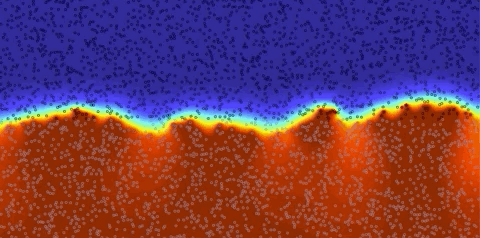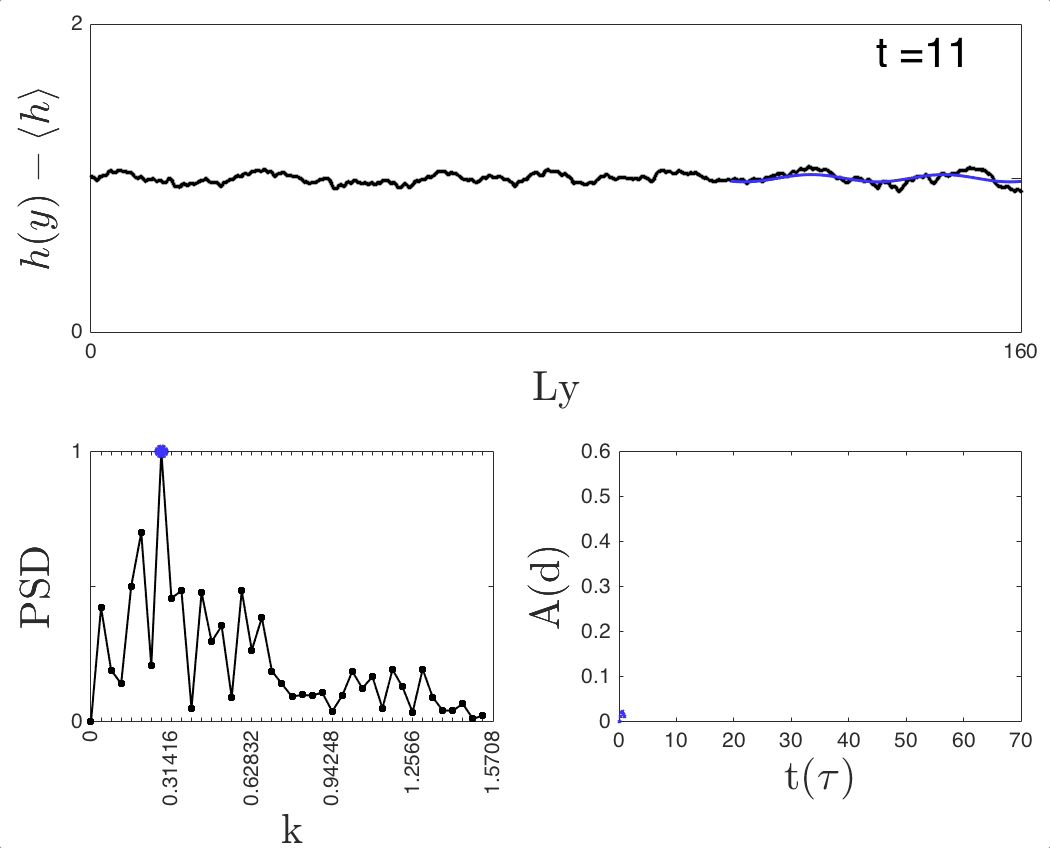Heat-Mass Transfer Simulation
Summary
In this project we created simulation of heat-mass transfer process to assist in design new porous materials, with potential use in energy-efficient products. The results of this specific system also can be applied to combustion flames in a suspension of metal particles and more general case of interface propagation in heterogeneous excitable media which has a vast range of applications from materials science to biology. For example, the dynamics of calcium waves released from spatially random distributed sources.
Stochastic Cellular Patterns

Power Spectrum Density

Achievements
- Developed C++ codes for large-scale parallel computing using AMR algorithm, 10x speed up across 512 computational cores
- Established numerical techniques to explore the effect of stochastic noise on dynamics of patten formation
- Wrote a massively parallel 2D Monte Carlo code in C to generate variety of randomly structured materials
- Programmed Matlab codes to perform spectral analysis, Improved accuracy of material’s characterization by 20% resulting in better evaluation & selection of the most promising materials
